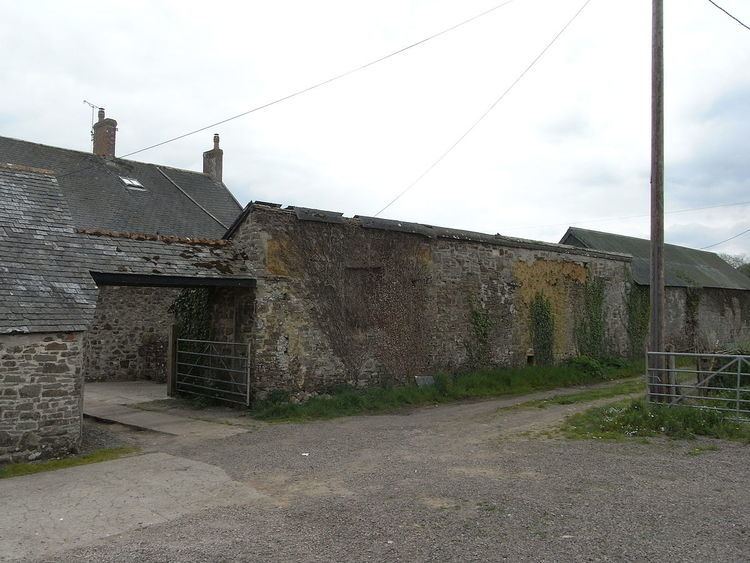 | ||
The Chapel of the Holy Trinity at Umberleigh is a ruinous mediaeval chapel in north Devon, England, largely demolished according to Lysons (1822) in about 1800. It stands next to Umberleigh House, the manor house of Umberleigh, which still survives in the form of a large Georgian farmhouse. The ruins together with the adjoining Umberleigh House were granted a Grade I listed status on 25 February 1965. According to Tristram Risdon (d.1640) the Devon historian, the site was originally a royal palace of the Saxon King Athelstan and was later a mediaeval mansion house by successive inheritance of the Solery (or de Soligny), Champernoun, Willington, Beaumont and Bassett families. The chapel, manor house and estate of 400 acres with 7 cottages is today the property of the Andrews family, which purchased the freehold of the property in 1917 but had been long-standing tenants of the Bassett family from about 1840. The south wall of the chapel survives and today forms the back wall of an outbuilding used for general storage.
Contents
Foundation
Umberleigh Chapel of the Holy Trinity was founded by the widow Lady Joan Willington (died c. 1314), née Champernowne (Latinised to Campo Arnulphi ("from the field of Arnulph")), formerly the wife of Sir Ralph Willington of Gloucestershire, and the daughter and heiress of Sir William Champernowne of Umberleigh. The foundation deed was quoted by Tristram Risdon in his 1630 work "A Survey of Devon":
"Johan de Campo Arnulphi salut(em). Noveritis me in viduitate mea divinae charitatIs). intuit(a). pro salutat(e) animae meae et antecessorum meorum nec non pro salutate animarum domini Will. de Campo Arnulphi patris mei et Eve matris mei et puerorum nostrorum conces(sisse) totam terram de Wiara ad sustentationem capella ad present(atio)nem nostram et haeredum ad celebrand(um) divina in capella nost(ra) de Umberley. Hiis testibus: John de Punchardon, Nicholao de Filleigh, Roberto Beaple, Matth. de Wollington, milit(e)"
Which may be translated into English thus:
"Joan de Champernowne, greetings. Know ye that I in my widowhood, inspired of divine charity, for the salvation of my soul and of my ancestors, not least for the salvation of the souls of lord William de Champernowne, my father, and of Eve my mother and of Sir Ralph de Willington sometime my husband, and of our boys, have granted all the land of Wiara toward the sustenance of a chaplain of our own presentation, and of that of our heirs, to divine celebration in our chapel of Umberleigh. With these witnesses: John de Punchardon, Nicholas de Filleigh, Robert Beaple (of Landkey), Matthew de W(i)llington, knight".
Monuments
Most of the monuments which had been erected in the Umberleigh Chapel over the centuries were removed in about 1820 to nearby Atherington Church. The return made by a resident of Umberleigh to Dean Milles' Questionnaire of about 1753 records the then appearance of the Umberleigh Chapel. Three tombs existed, identified by Coulter by the letters A, B and C:
Risdon, writing in about 1630 described the Chapel and its contents thus:
"In Trinity Chapel, which still stands, many of these (i.e. lords of the manor of Umberleigh) were interred, this being their principal dwelling, where they had fair sepulchres on whose tombs some of their proportions were curiously cut; but 'tempus edax rerum', now only two of them remain, upon one of which is the 'effigies' of a knight and his lady adorned with their armories, and other noble families, their allies, richly gilded, whereon the Courtenays, Grandisons, Willingtons, Whalshborowes, did not long since appear. On the other was a proportion, completely armed, lying cross-legged after the manner of such as in elder ages went to war in the Holy Land. But none of them have any inscription left to testify who they were".
